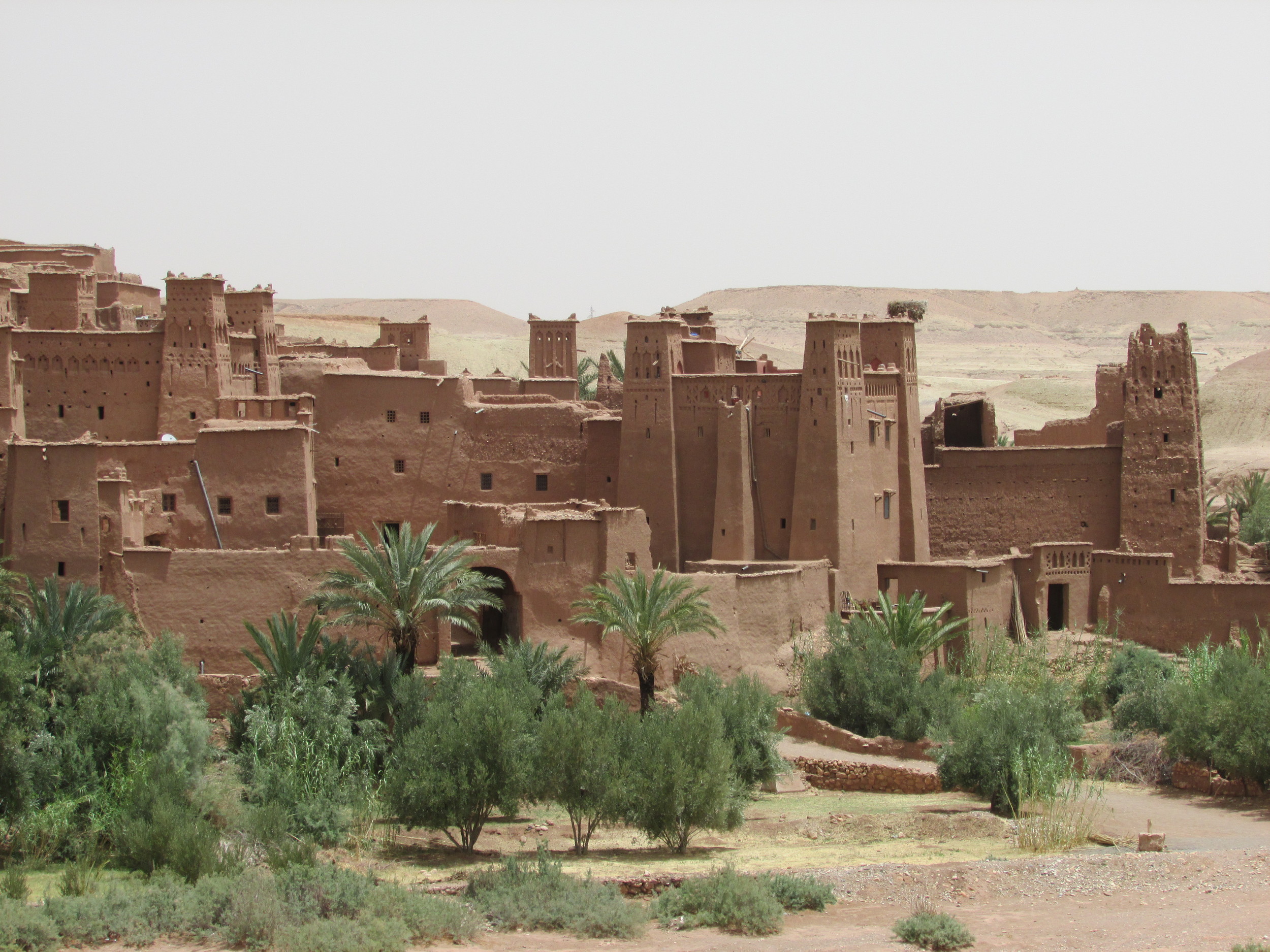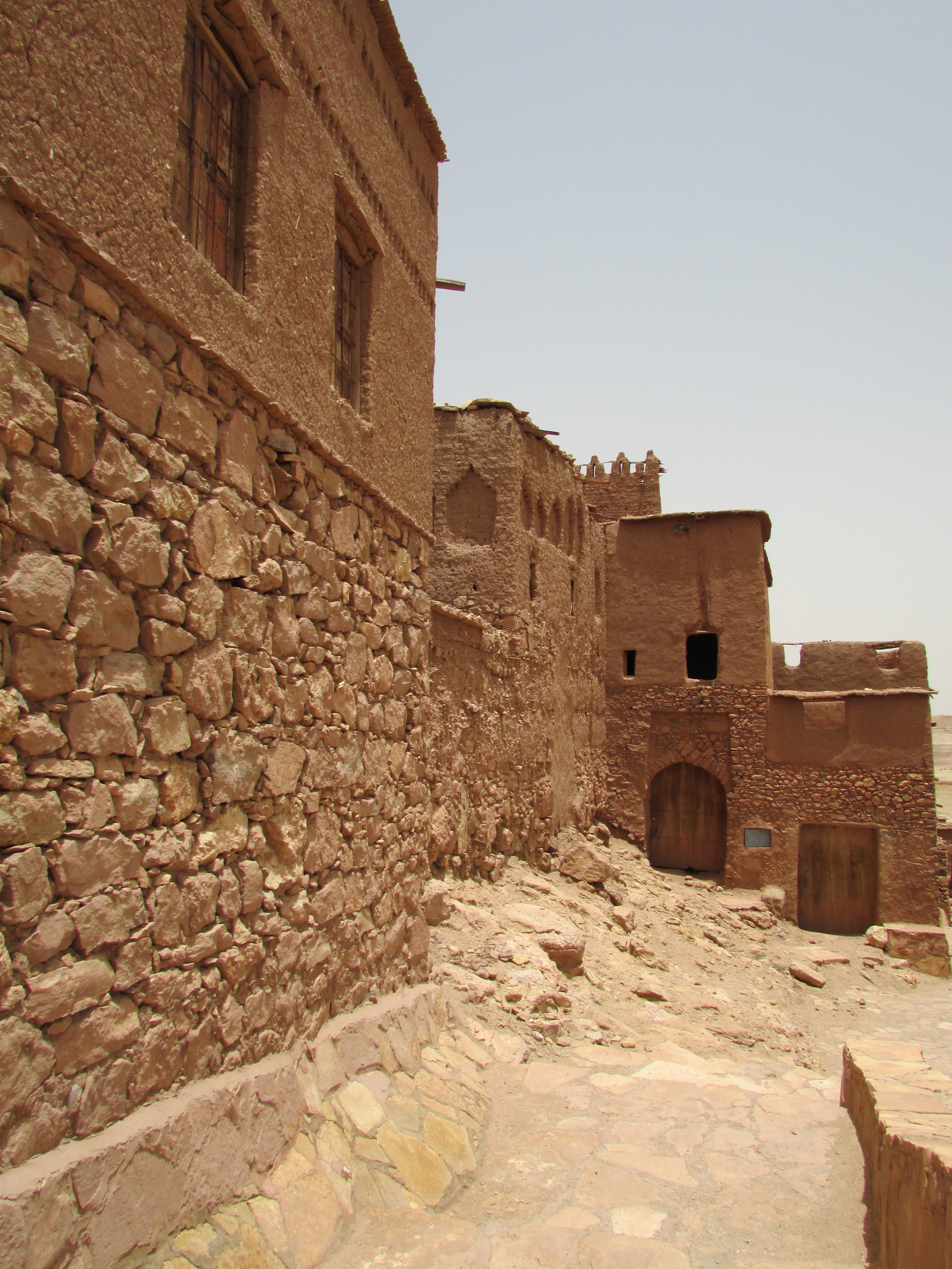The thin, two-lane road cut into the Atlas Mountains in Morocco wound at almost impossible angles amongst red earth, mud brick homes, parched looking olive trees, and orchards. We were careening around every corner, barely missing the small children draped in white robes leading skinny cows down the side of the road.
Passing a slow moving car would have been a suicide mission.
The small, 13-seater bus was stuffy, hot, and full of fellow travellers half asleep from the heat and half sick from the drive. I could feel gritty red sand mixing with the sweat in my sandals. I didn’t think I would ever stop sweating — It serves me right for visiting the Sahara Desert in July.
When I signed up for the tour (Note: I am normally not a fan of tours, but I was alone in Morocco in the middle of Ramadan and wanted to spend a night in the Sahara. The only way for me to do that safely was by taking a tour), that would eventually take me to a caravan of camels, the tour operator had mentioned something about a stop at a historic town that had been in many movies. I had basically ignored what she was saying — I am used to tour "stops" being cheesy tourist traps, souvenir shops, or horrible restaurants — and focused that at the end of the drive a camel would be waiting for me.
So, when we pulled over in a small town full of mud-brick homes and spilled out of the bus happy to be on solid ground, I was amazed at what was in front of me.
A city that looked like it was straight out of a Hollywood set crawled up a hill that rose on the other side of a dry riverbed. It was about 45 degrees Celsius out, and our guide handed us full bottles of water as he began picking his way across the riverbed, telling us about the history of the city we were approaching.
Called Ait Benhaddou, the fortified city sits along the former caravan route between the Sahara and Marrakesh. There are still four families that live in the city, maintaining some of the buildings and selling their wares to tourists, while the rest of the citizens of the area now live in more modern buildings (though not that much more modern) in the village that our bus had parked in.
Frozen in time, it looked like something straight out of Aladdin, and I wasn't far off. It turns out that some MAJOR Hollywood movies were filmed in this UNESCO World Heritage Site and sun scorched desert village — The Mummy, Gladiator, Prince of Persia, Indiana Jones, Cleopatra, Lawrence of Arabia, and scenes from the TV show Game of Thrones just to name a few!!
We were given 40 minutes to wander and so I let myself get lost in the maze of narrow brick alleyways, stone staircases and hidden archways until I found myself at the top of the complex where a ruined agadir (a fortified communal granary) sat surrounded by an incredible view of the surrounding rocky desert.
Though my water was gone, and I was melting from the heat, I was elated! This stop was not what I expected at all. Not only did we get to eat some pretty great food in the end, I got to visit a gorgeous, genuinely historic site that has made appearances in some of the biggest Hollywood films — not bad for just a "stop" in a tour!

















